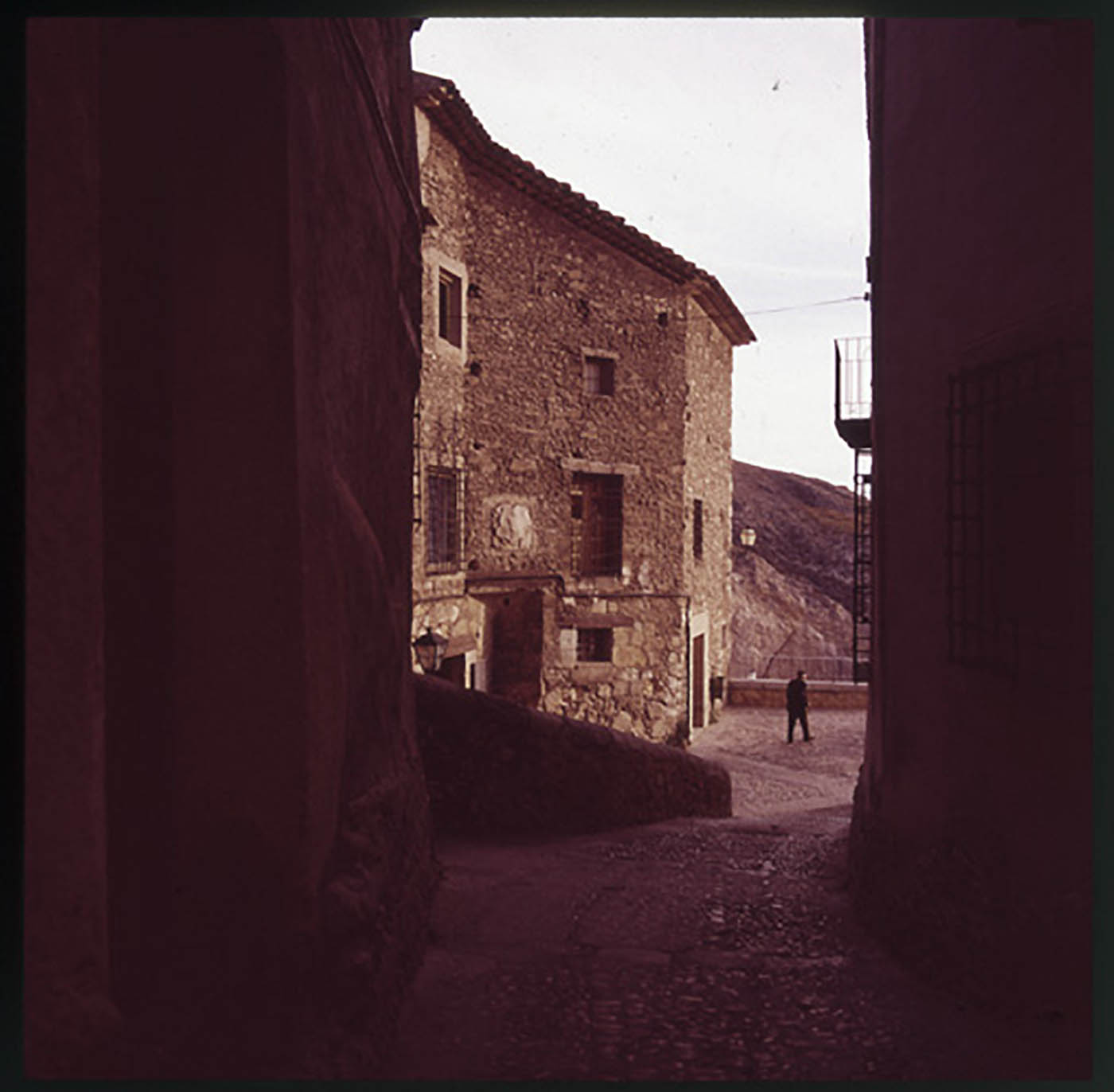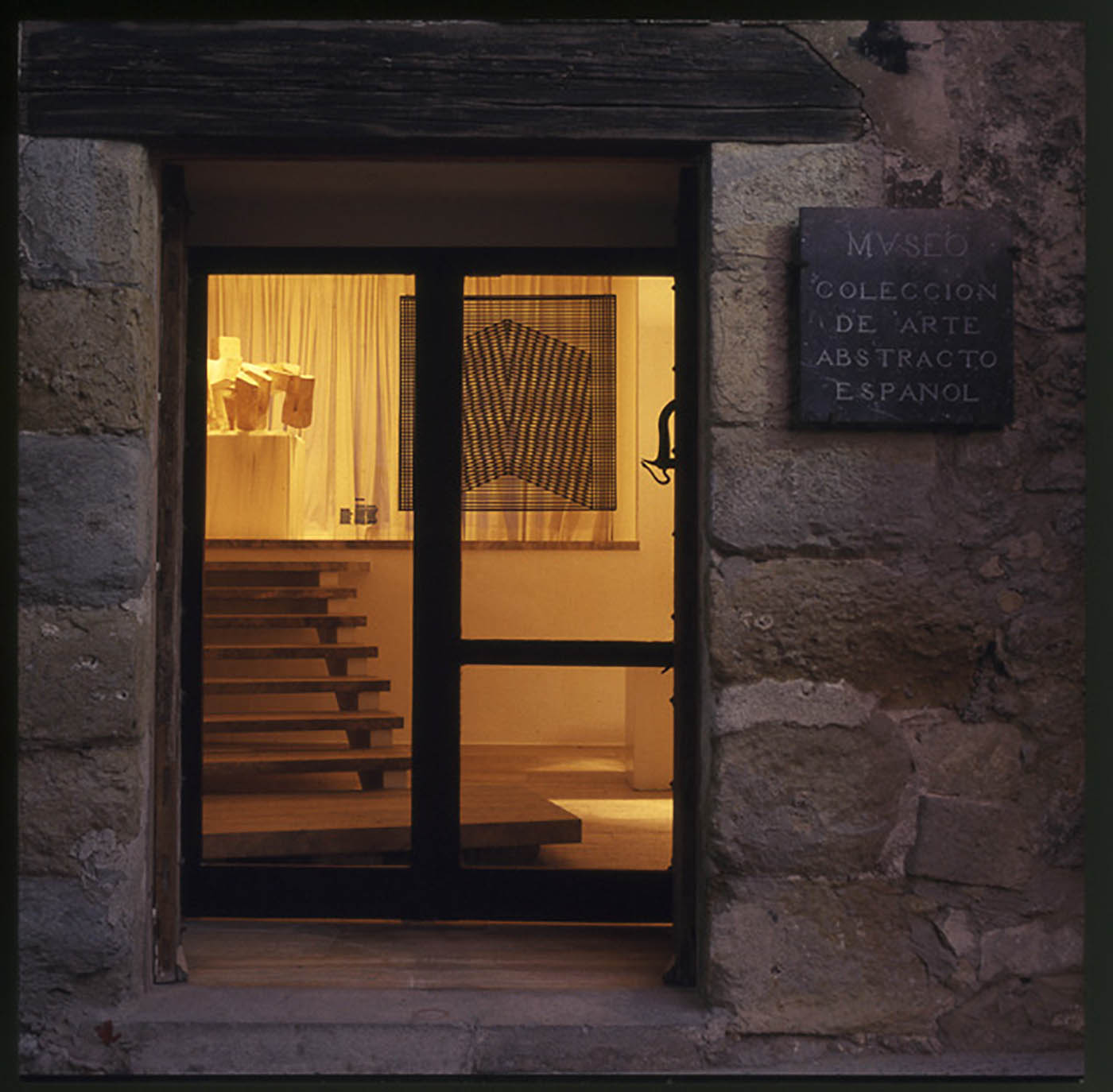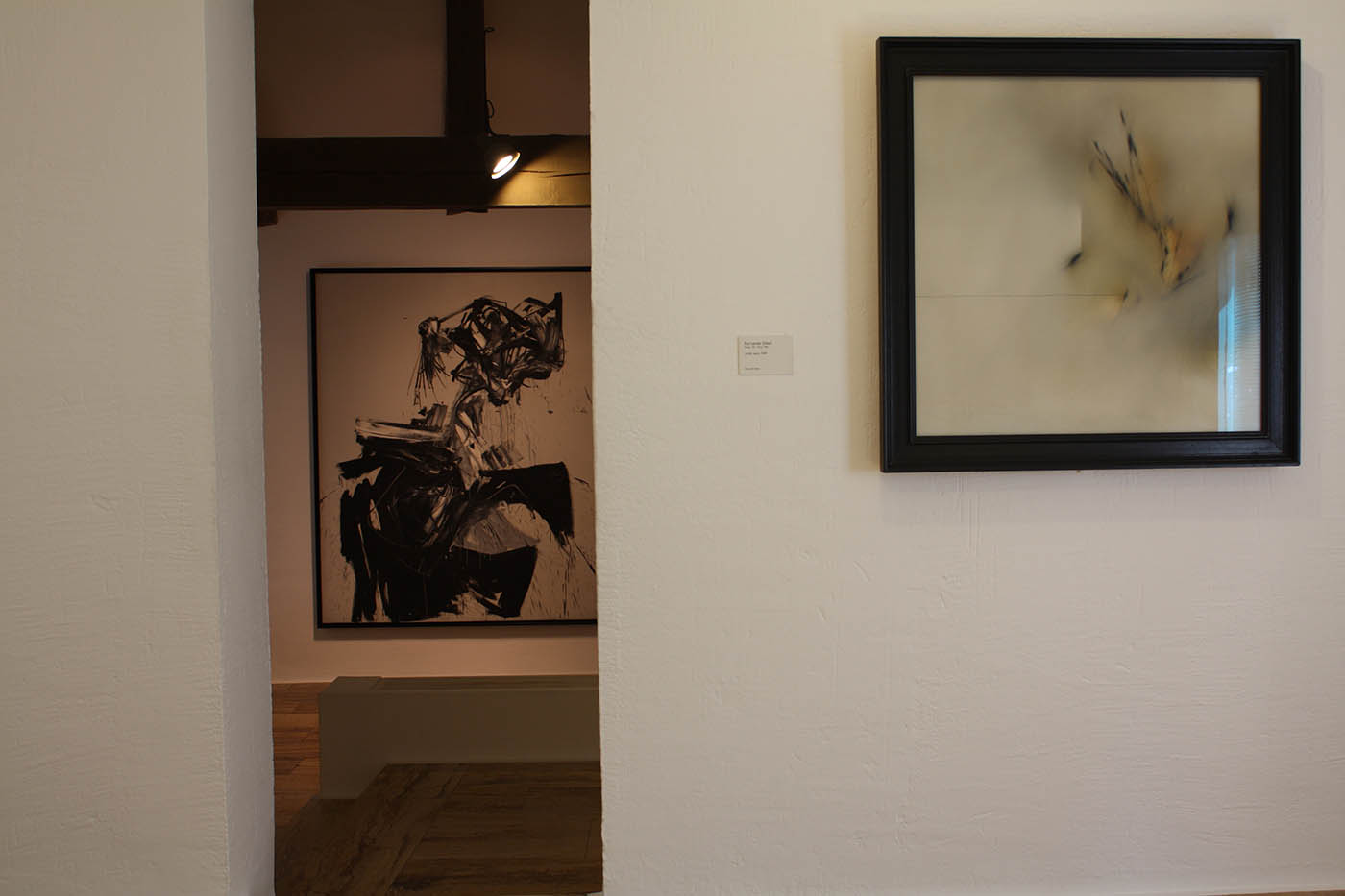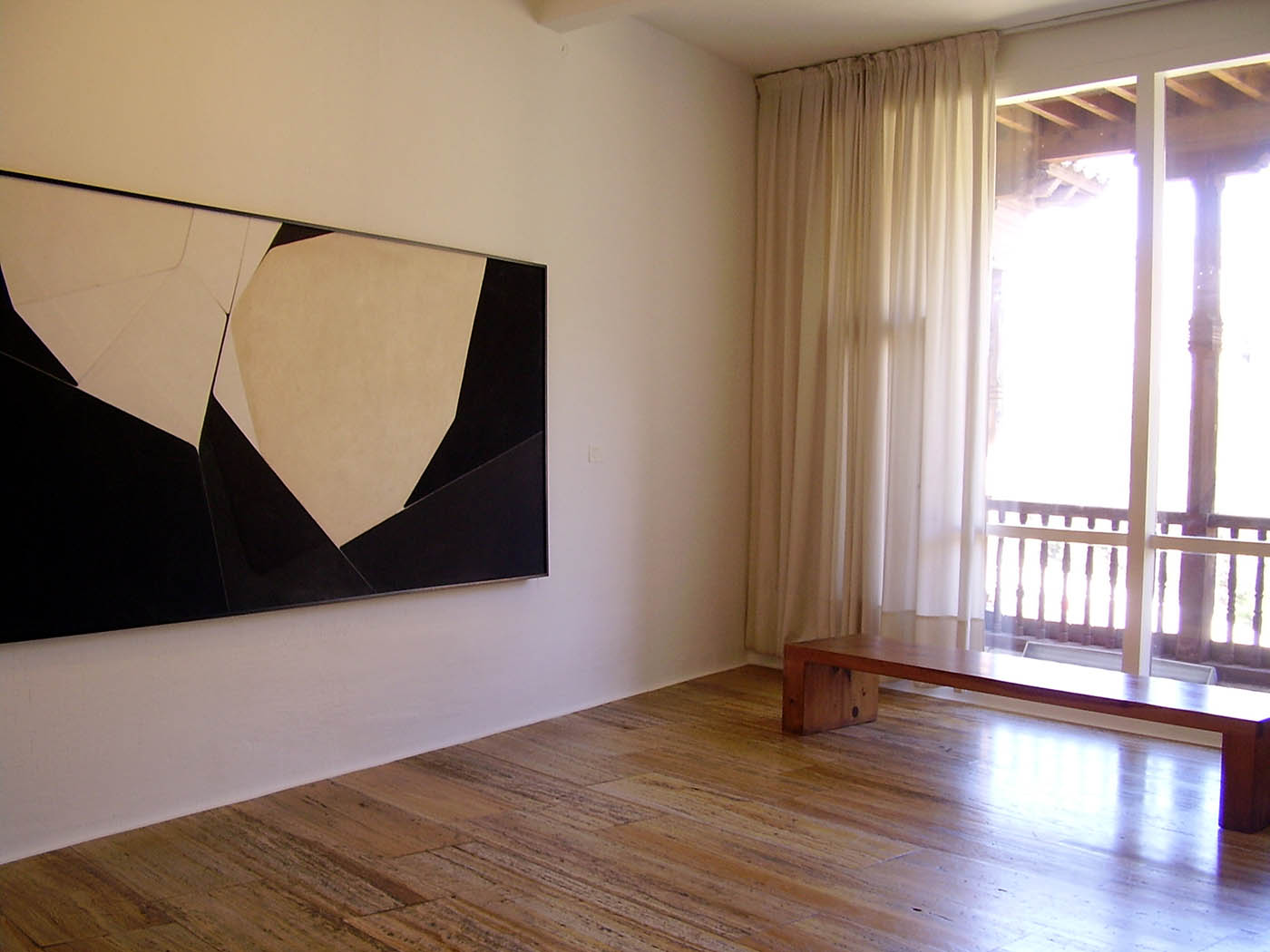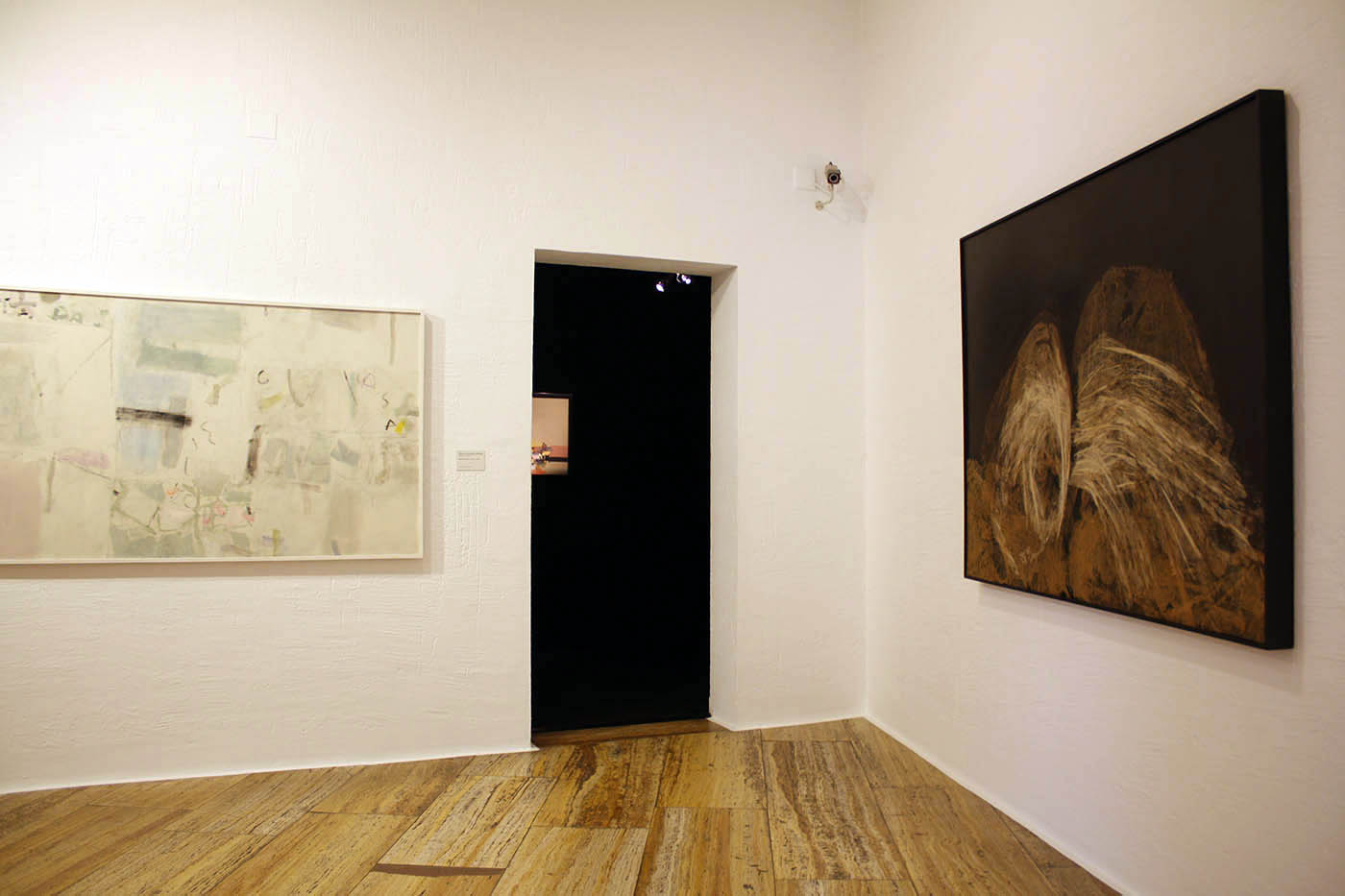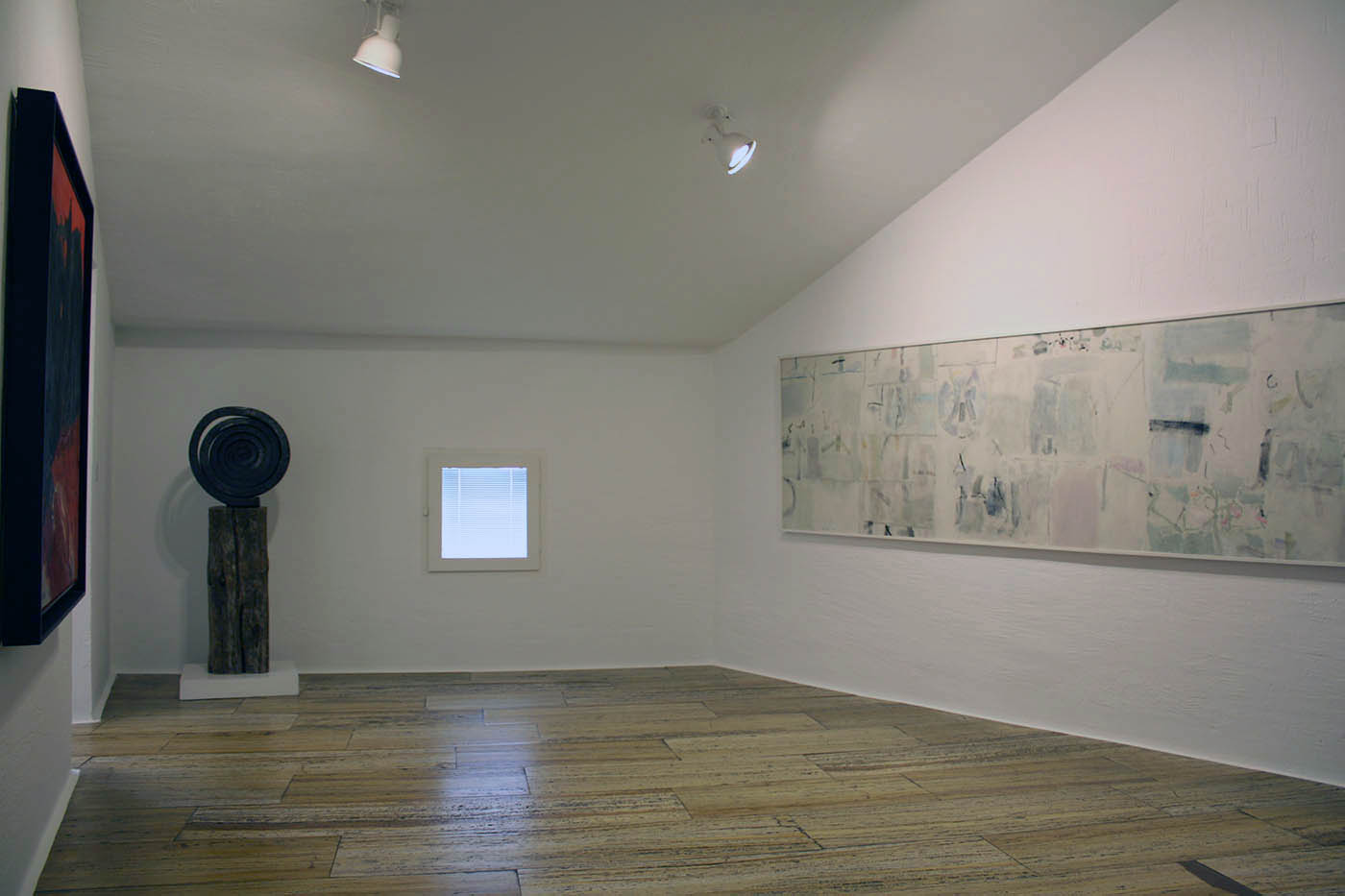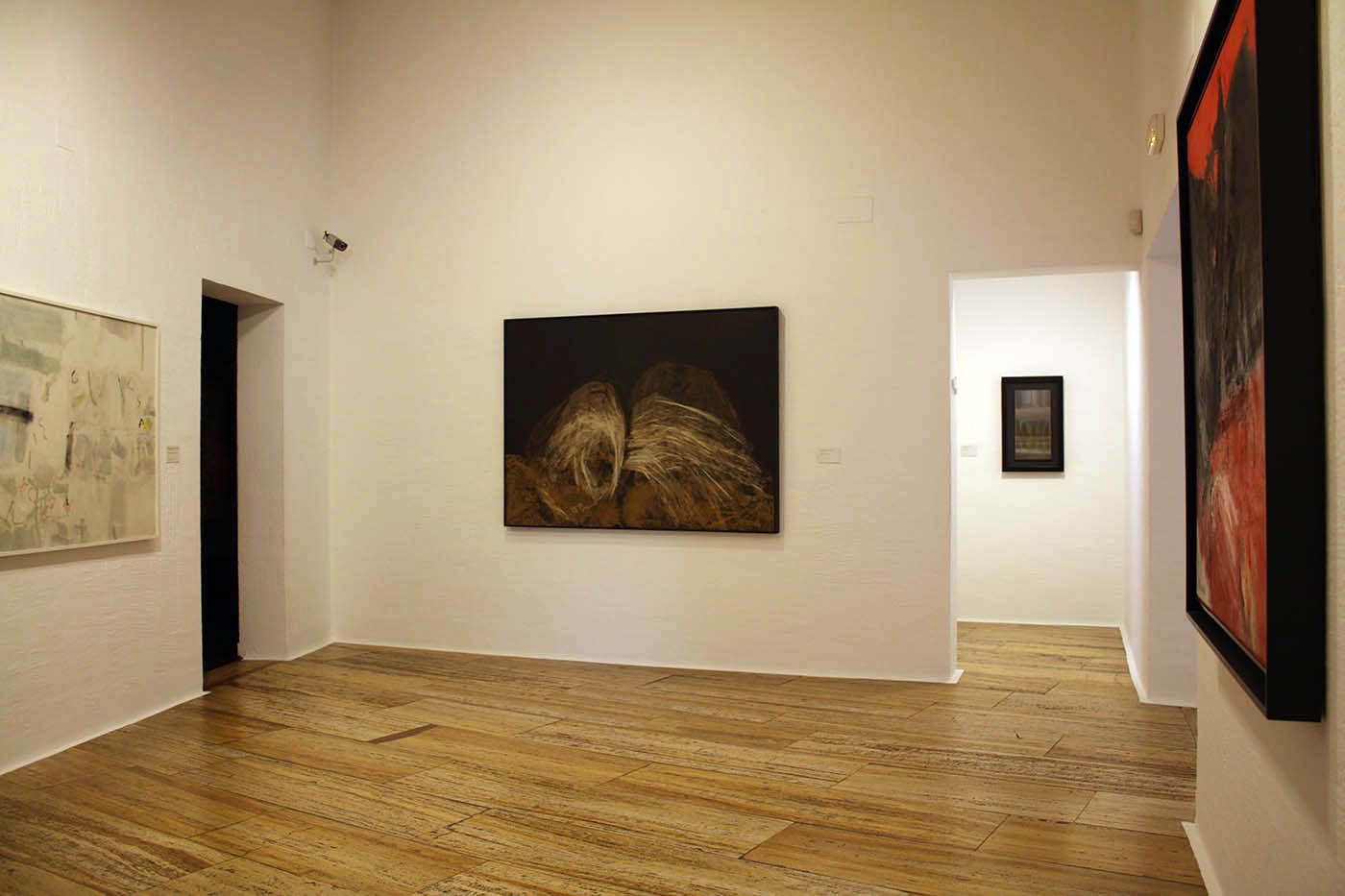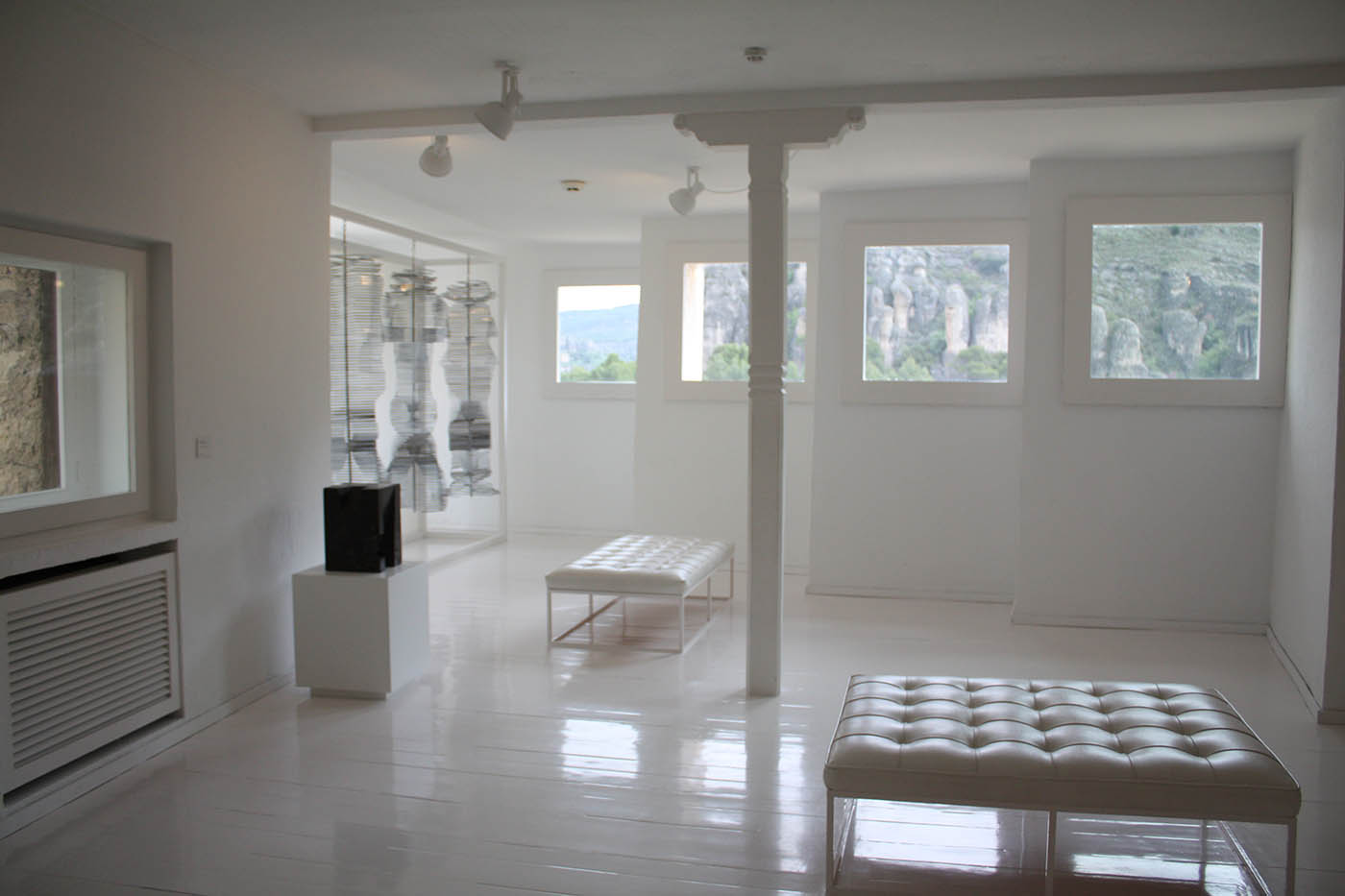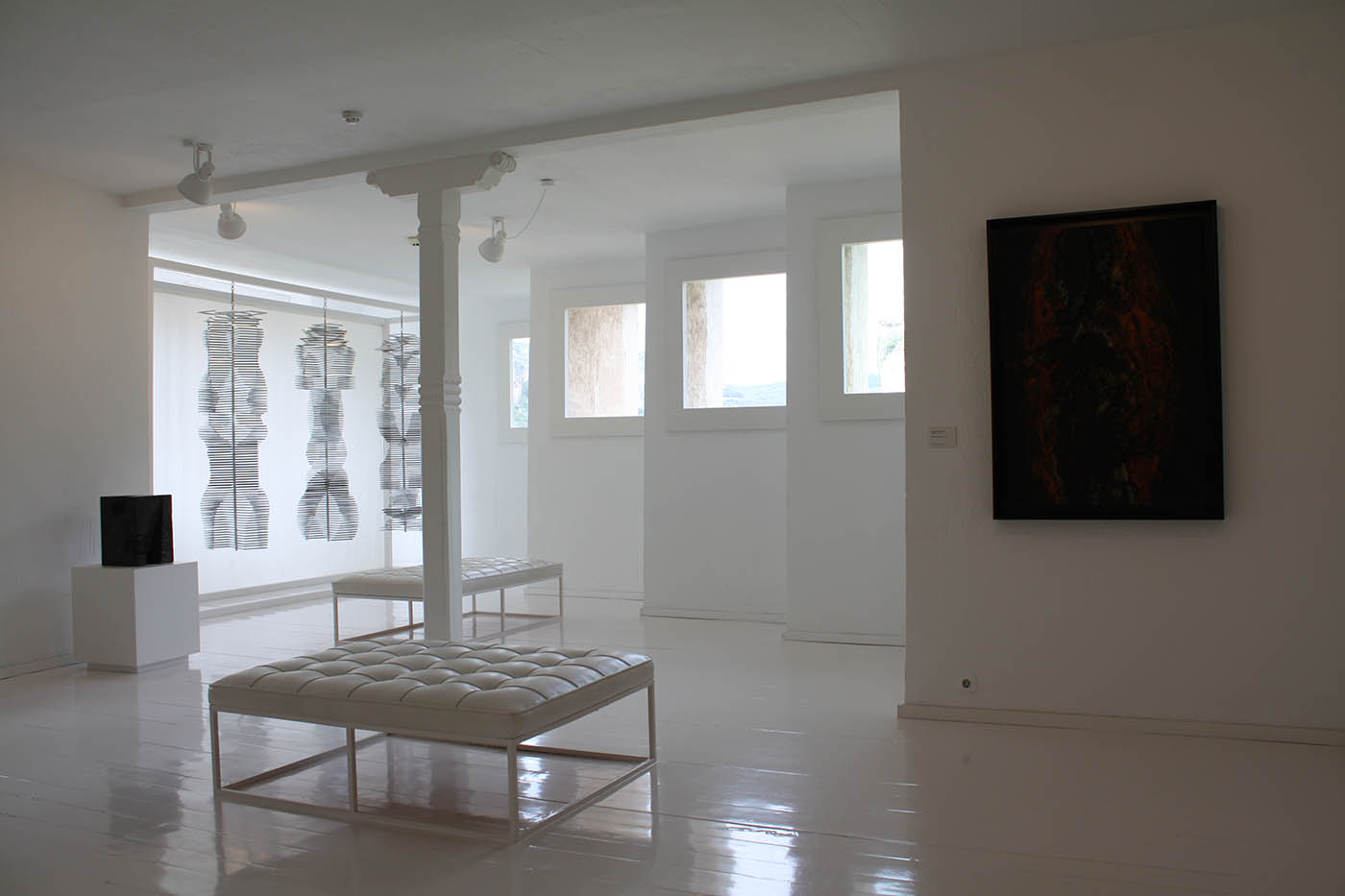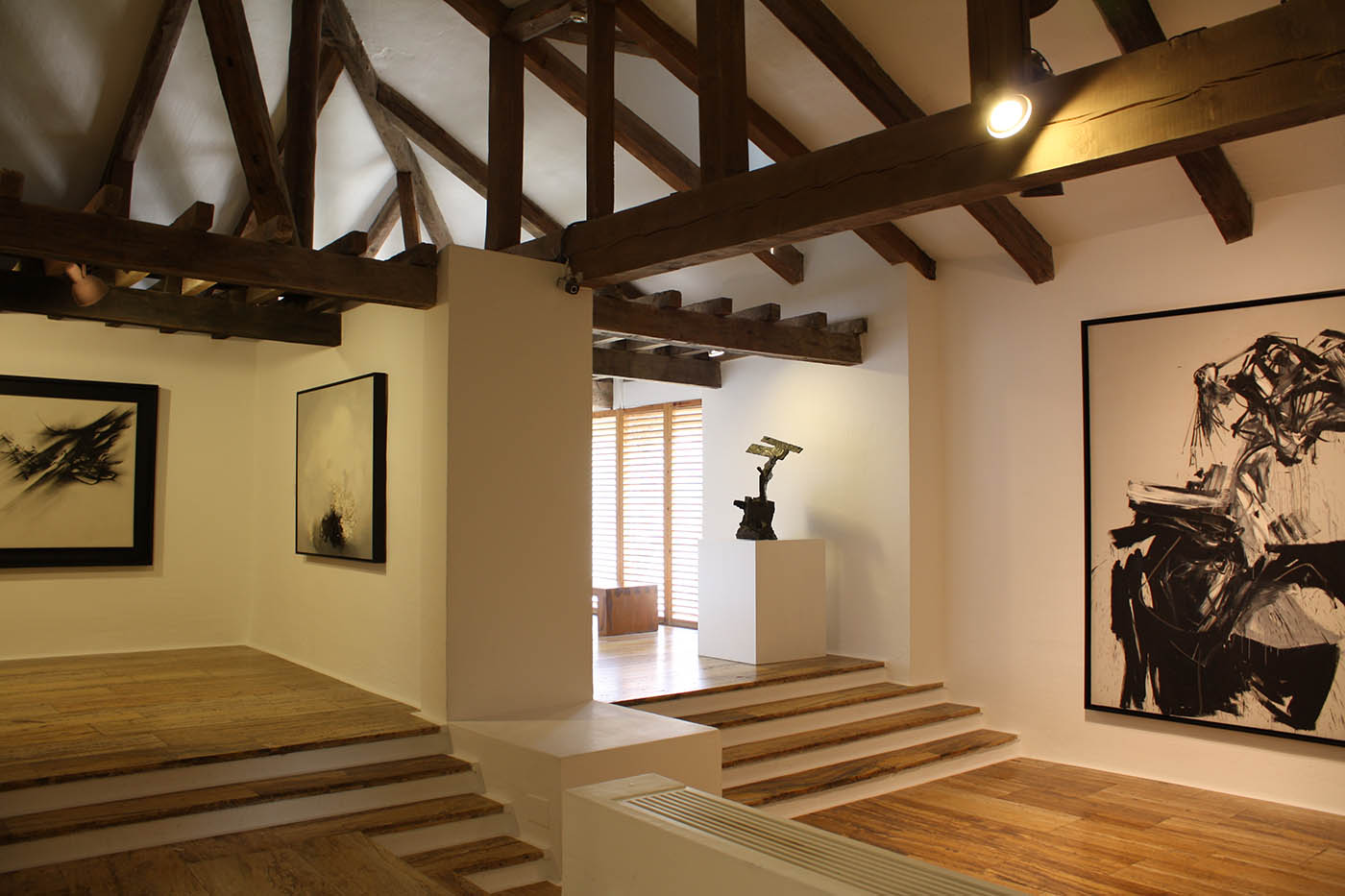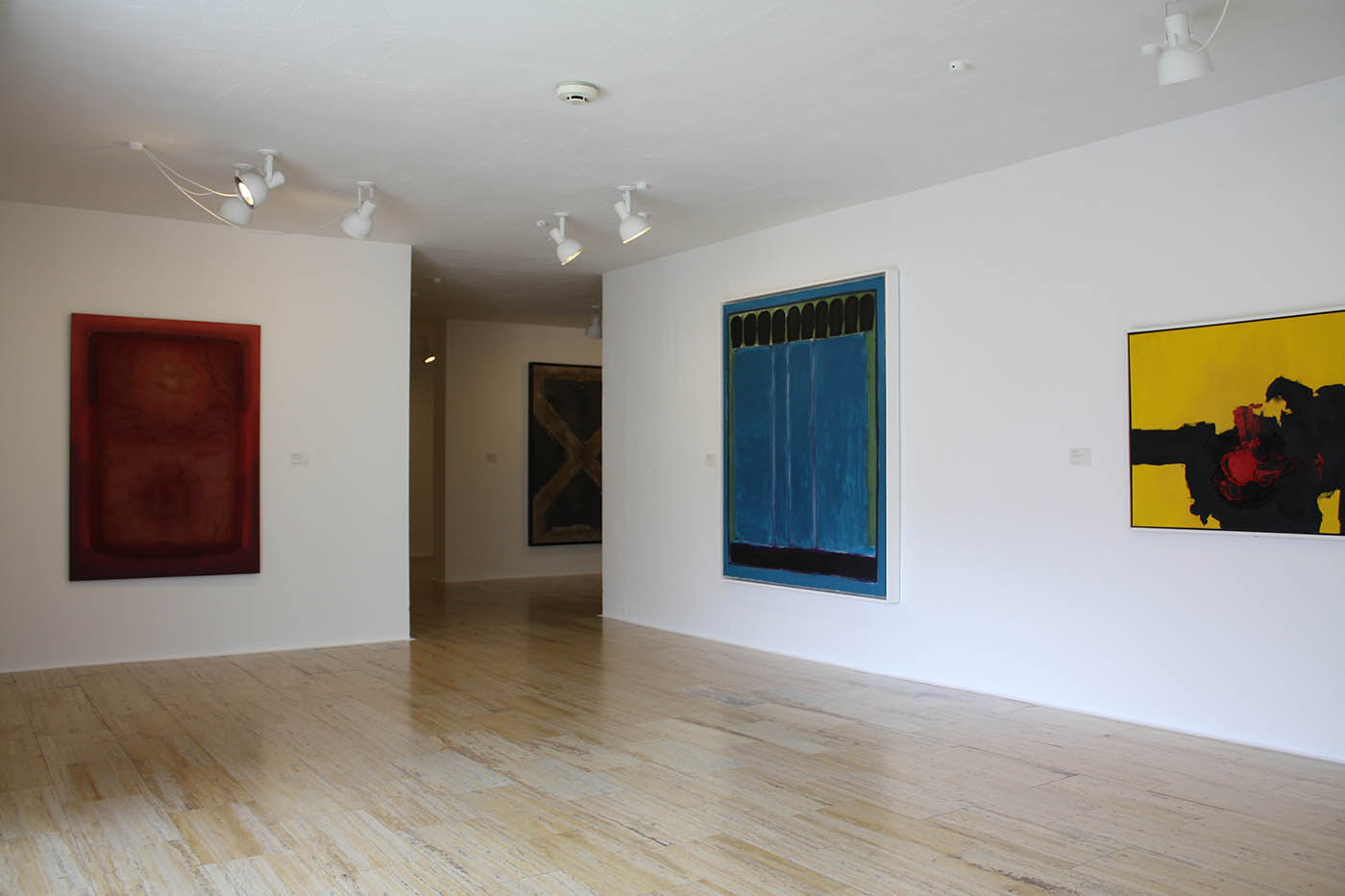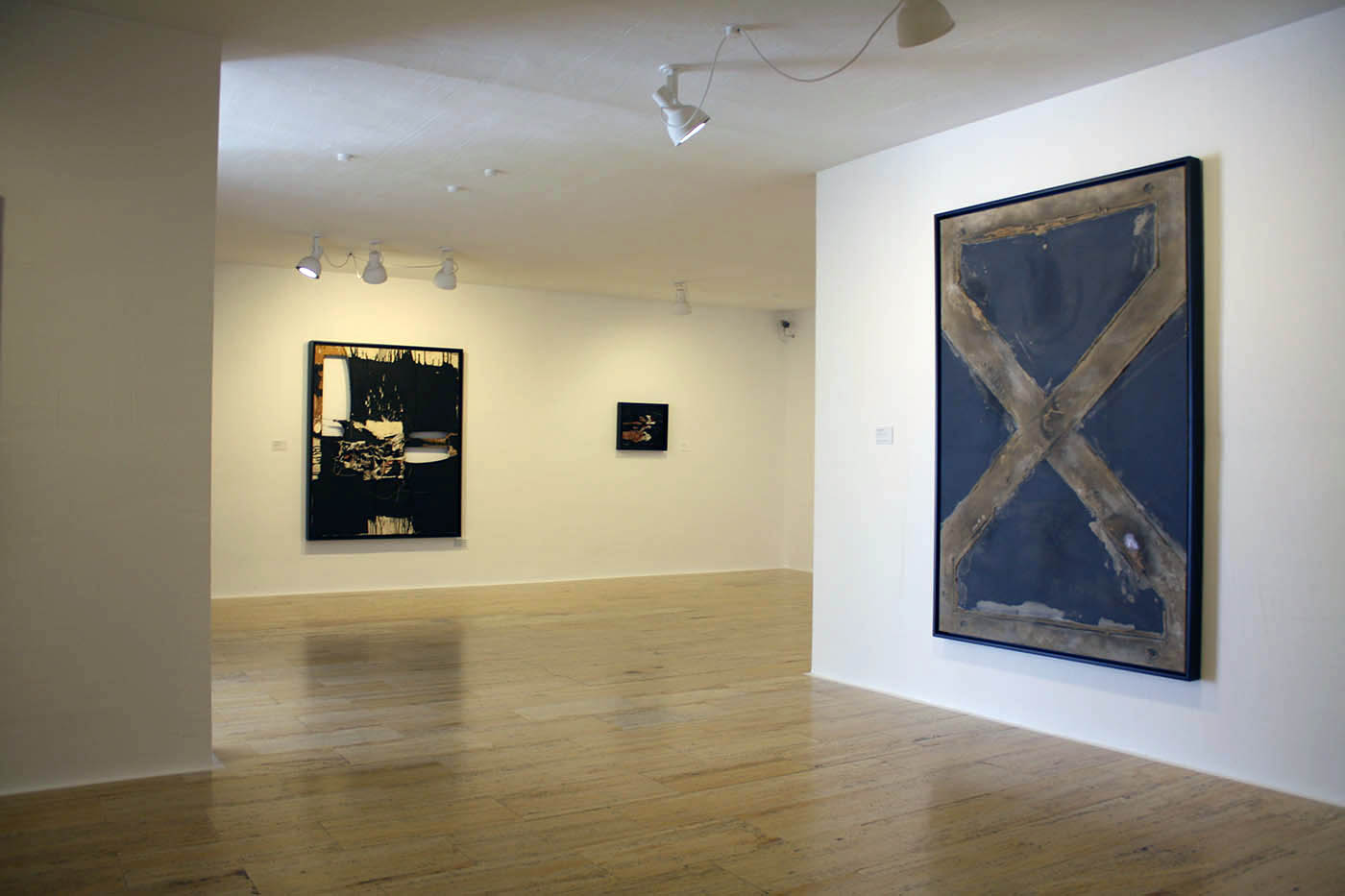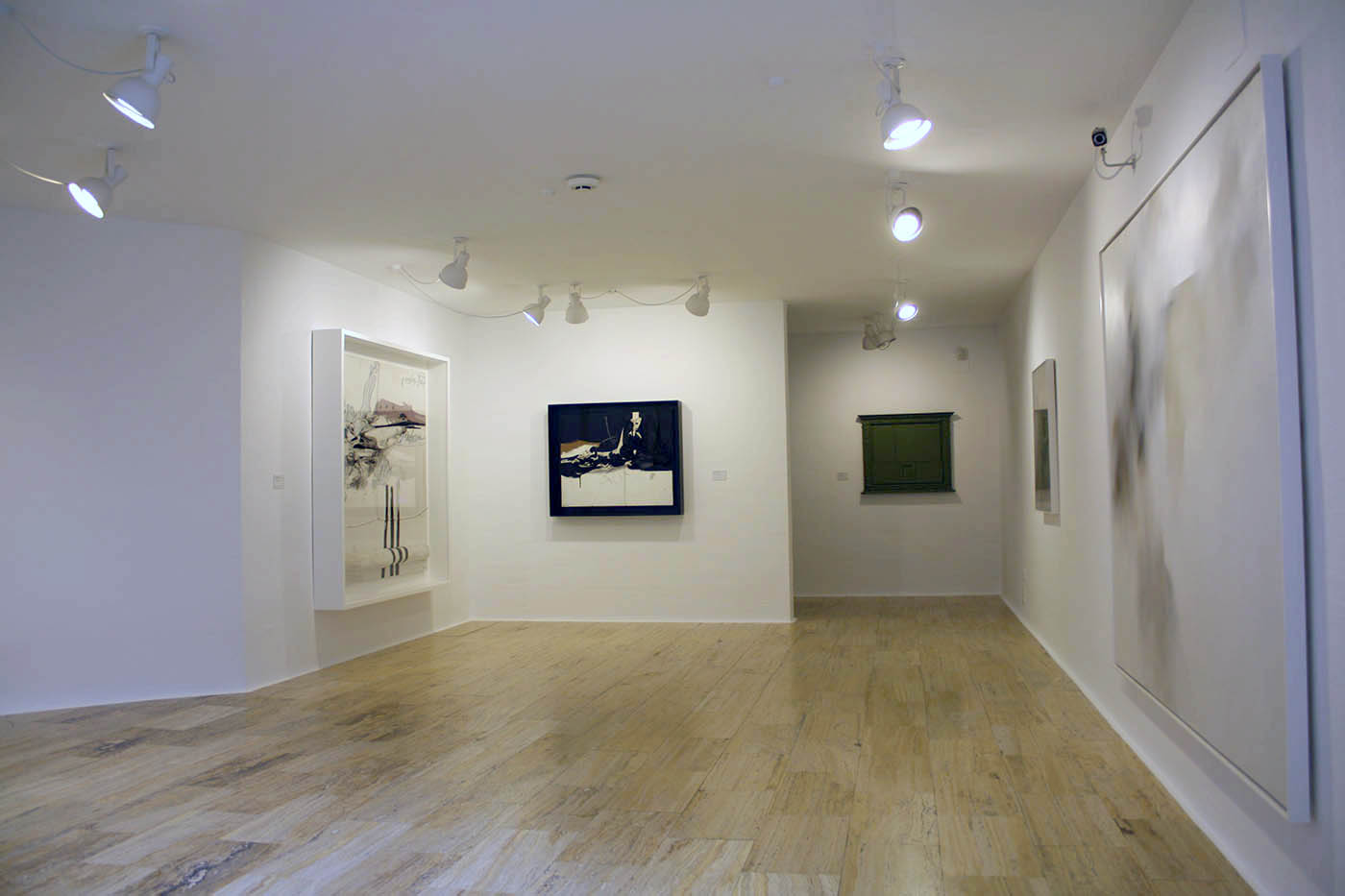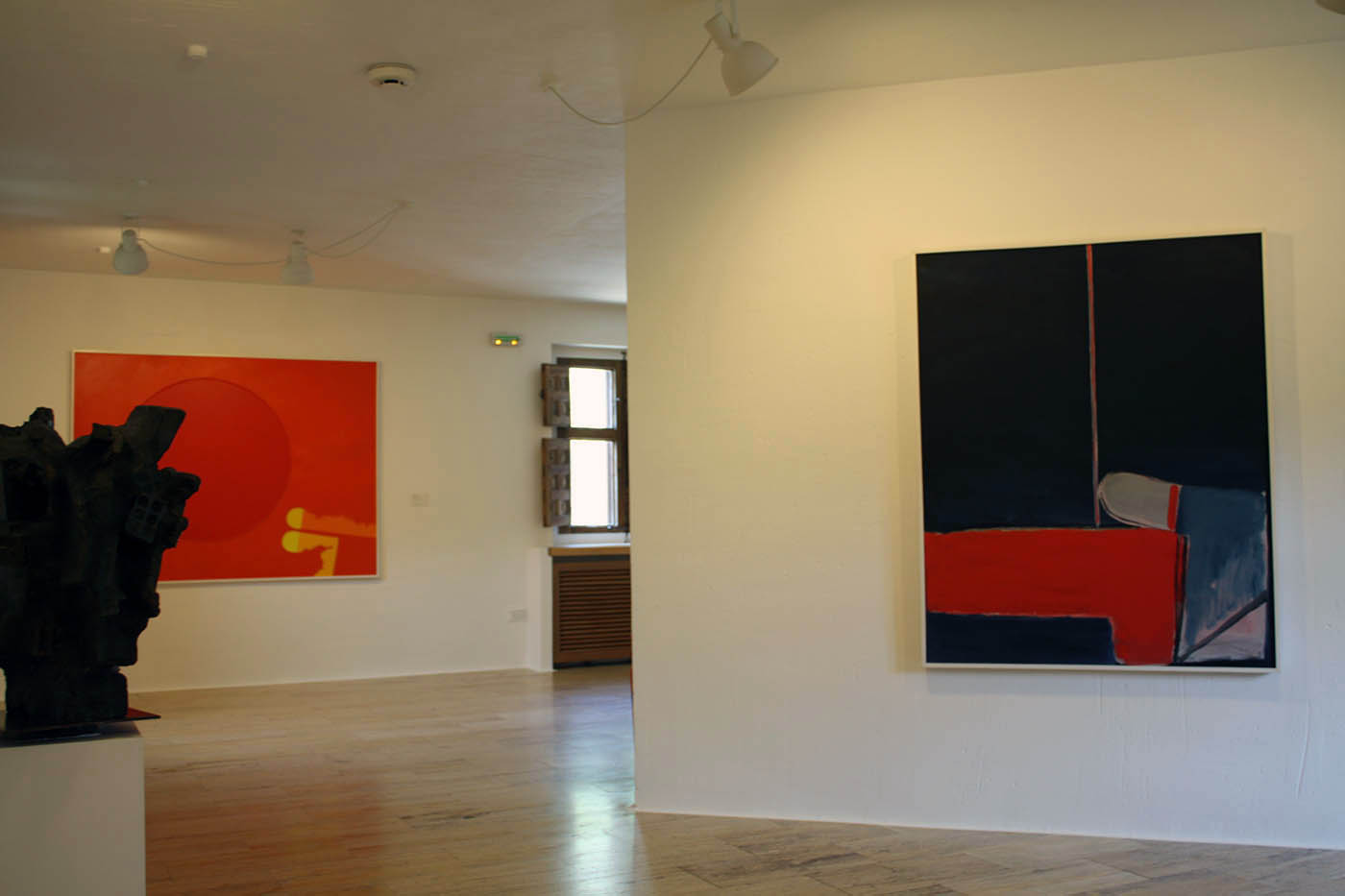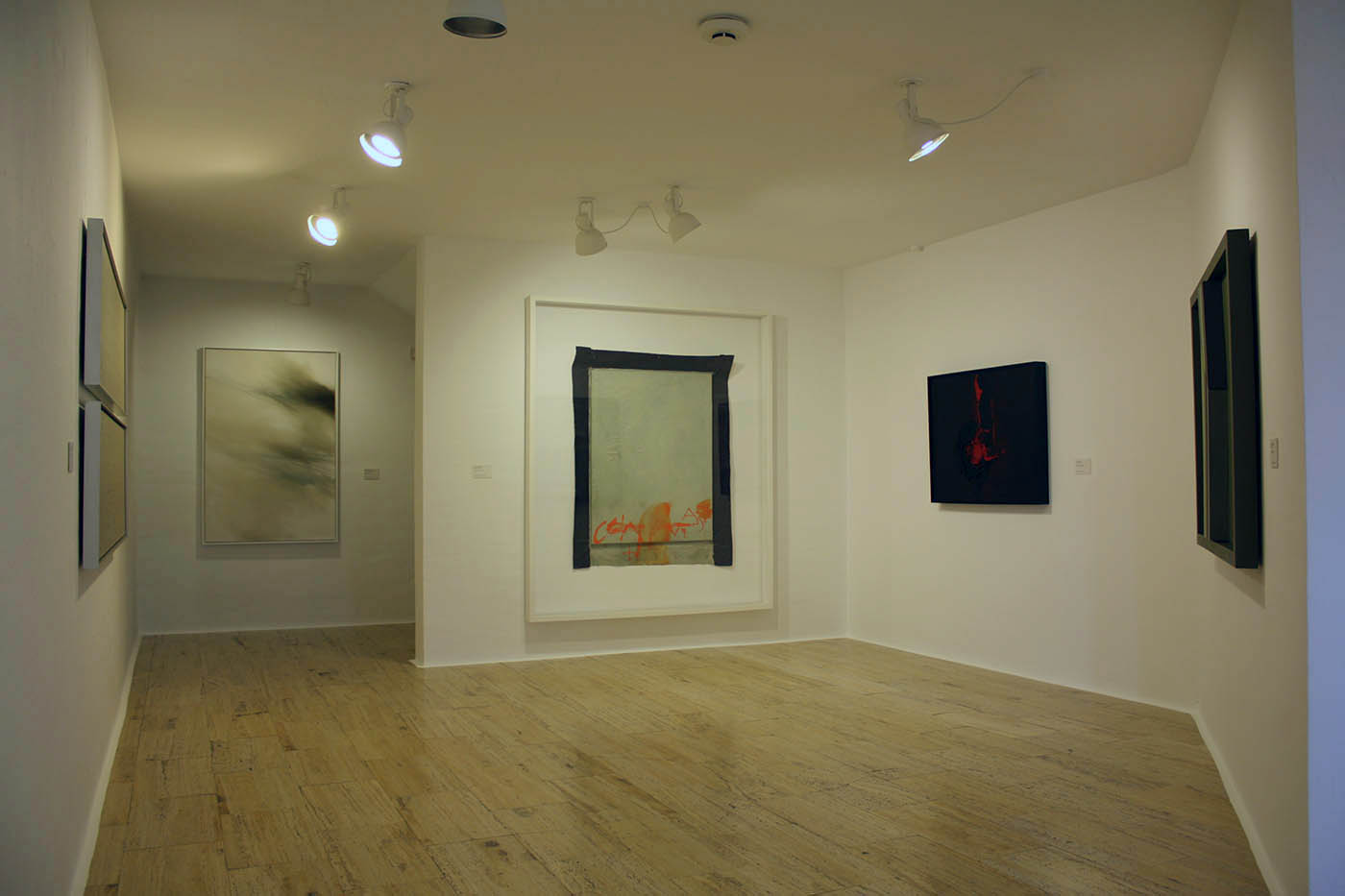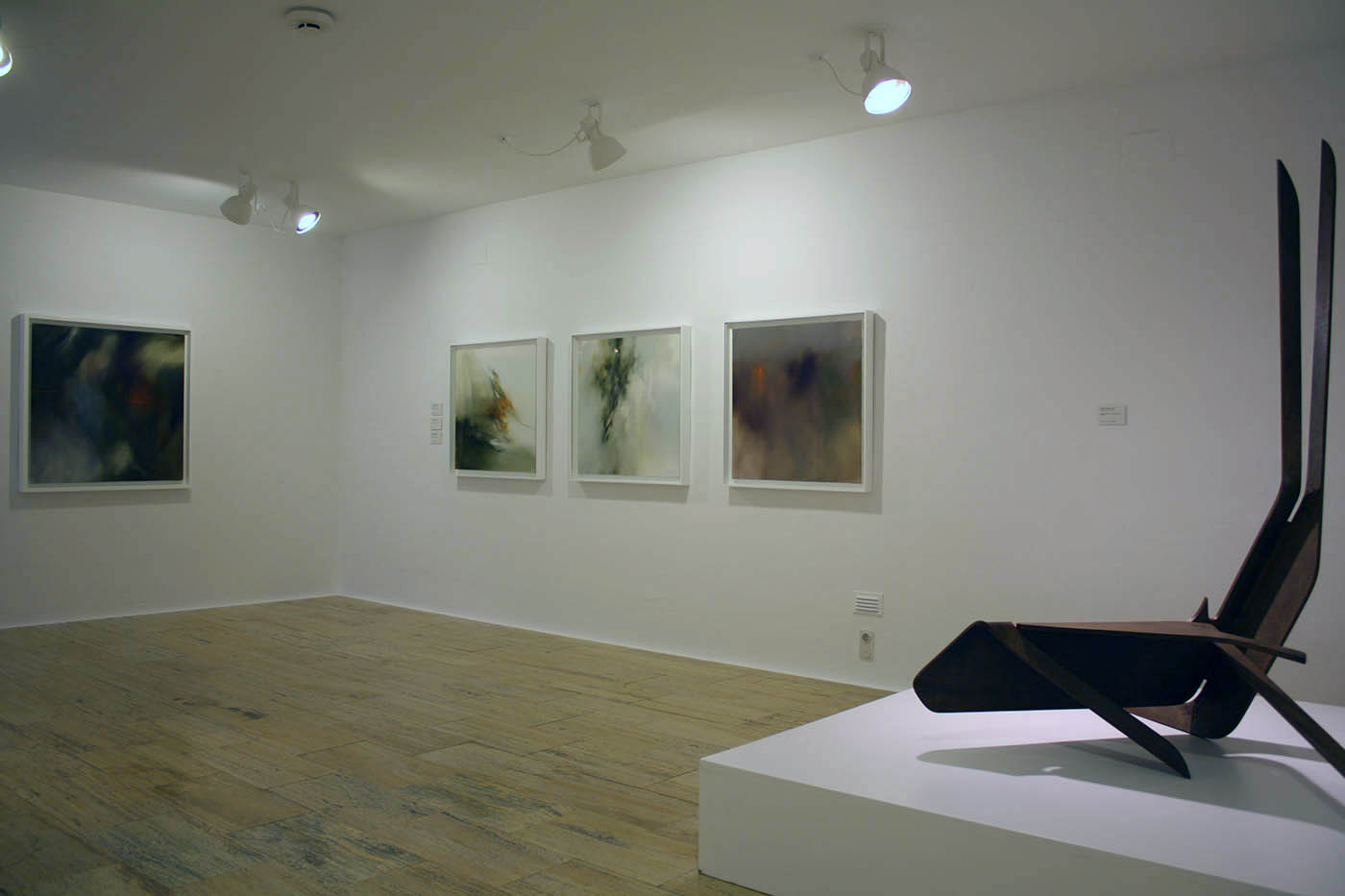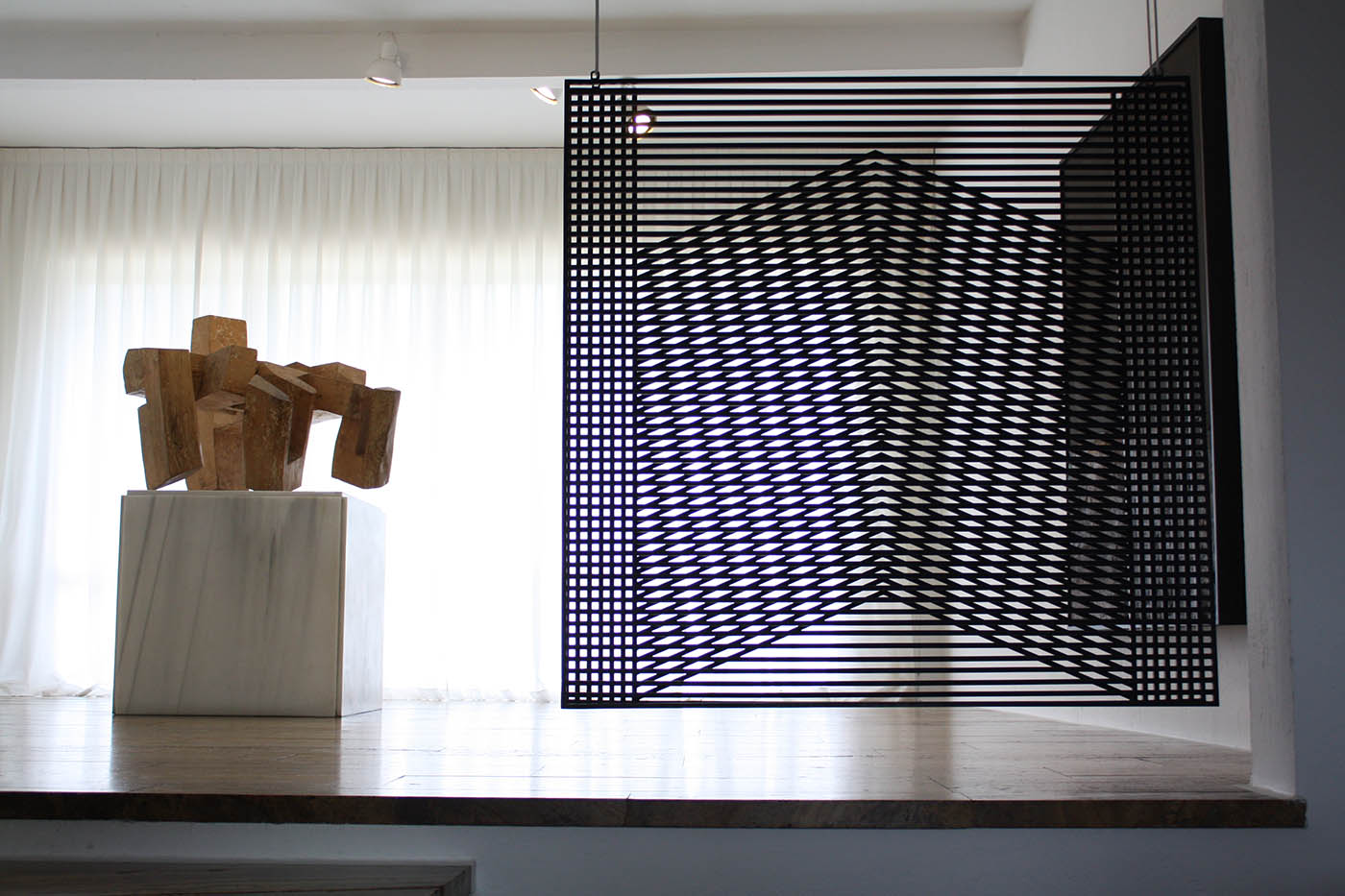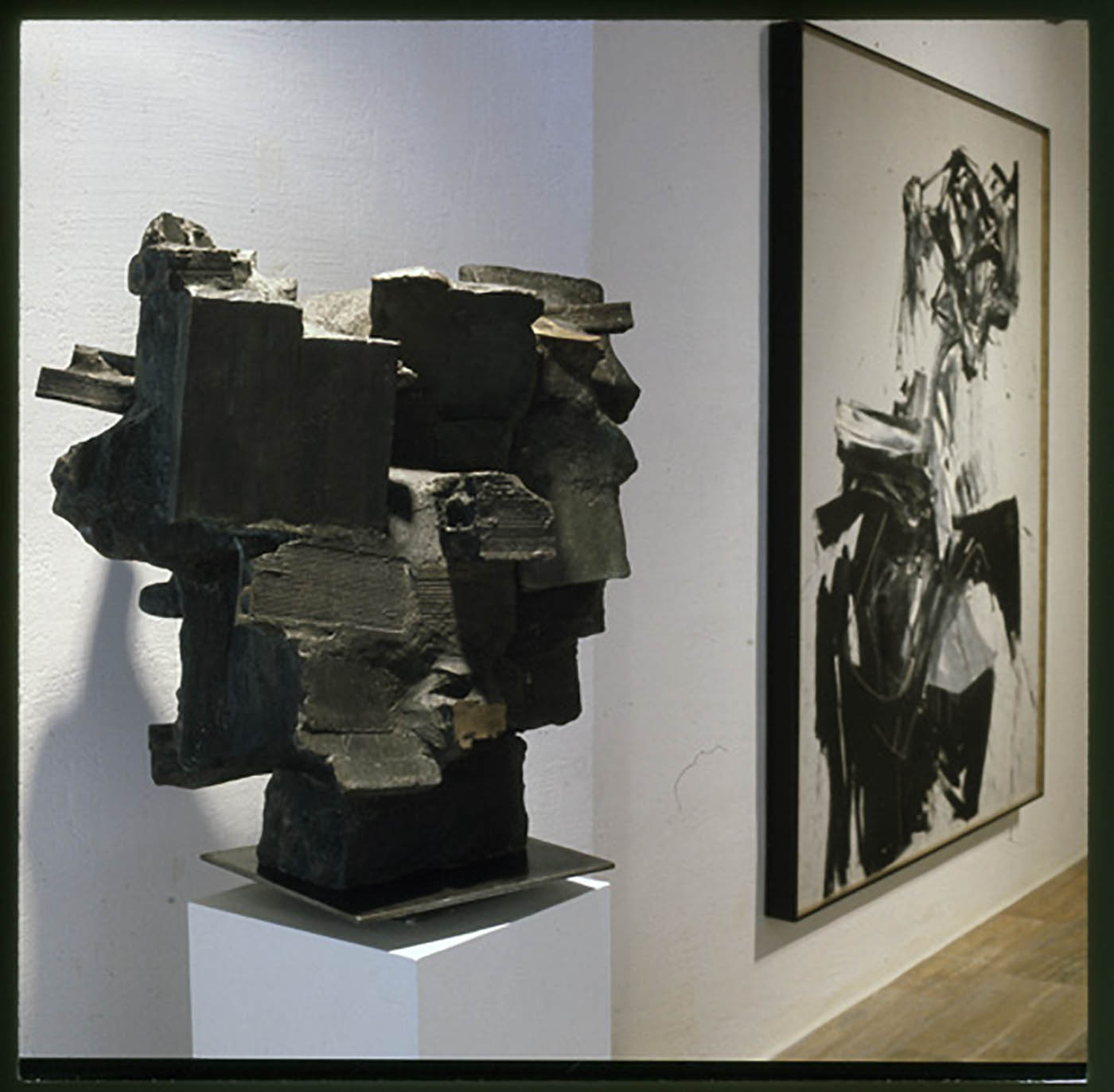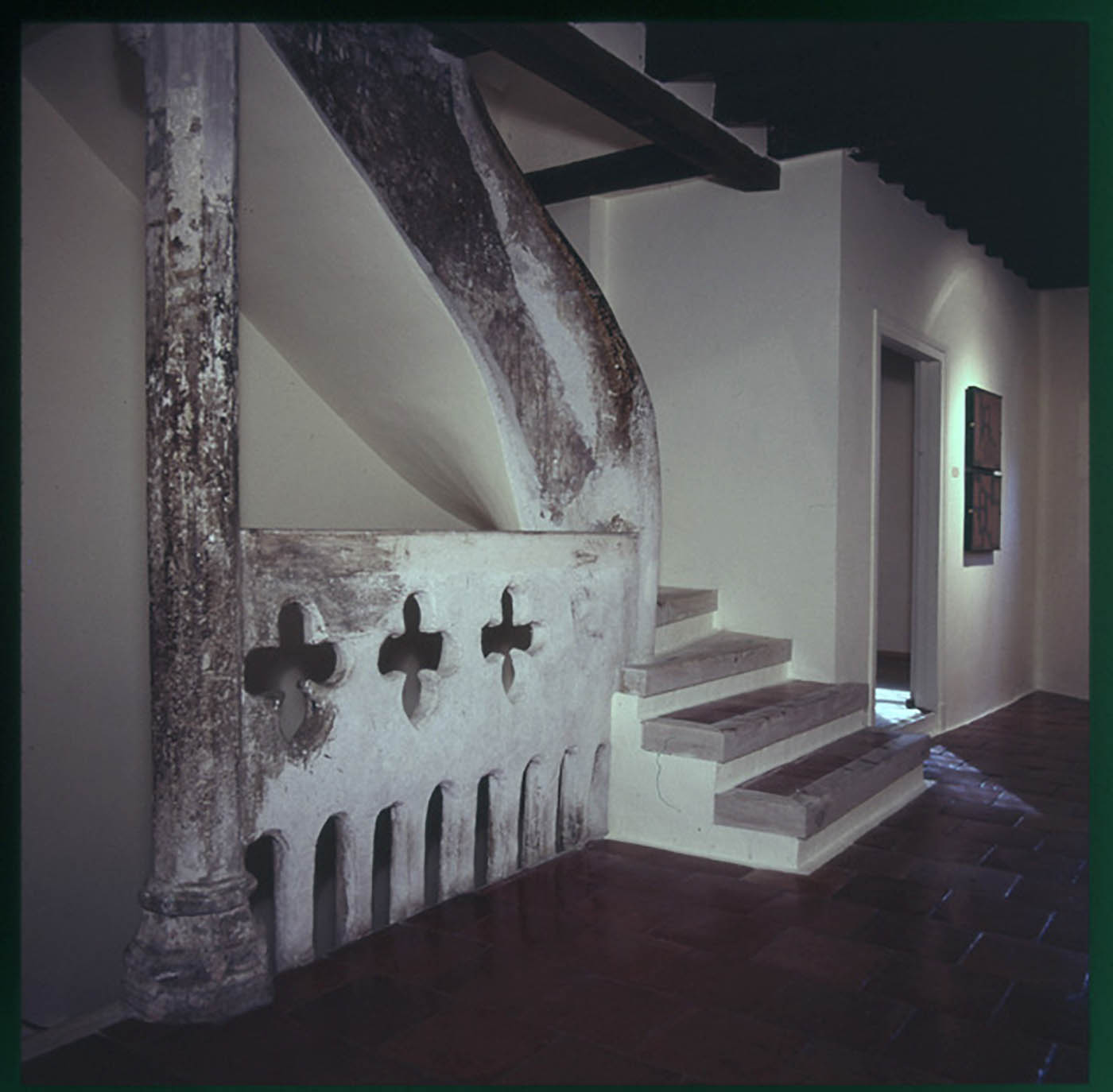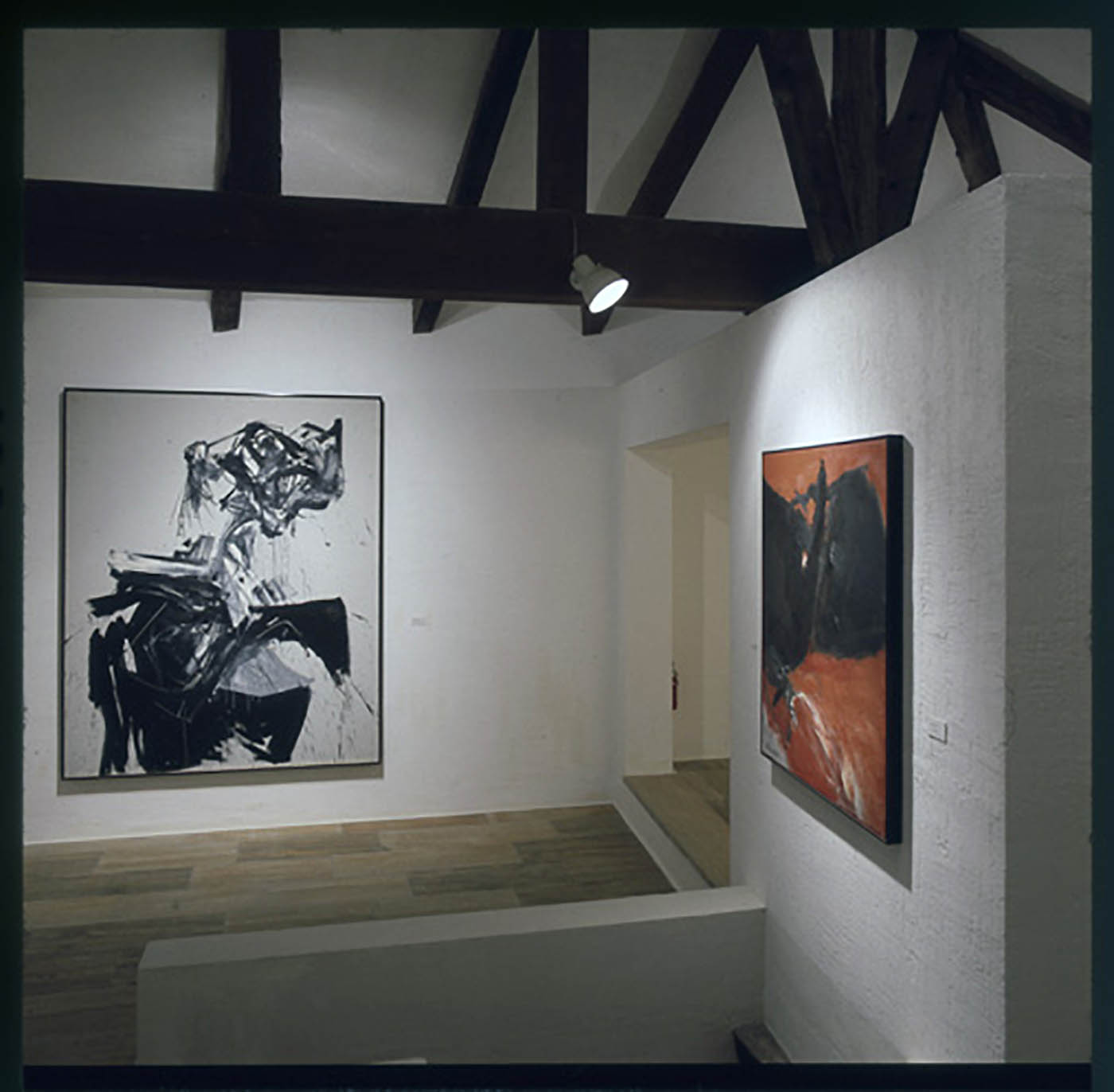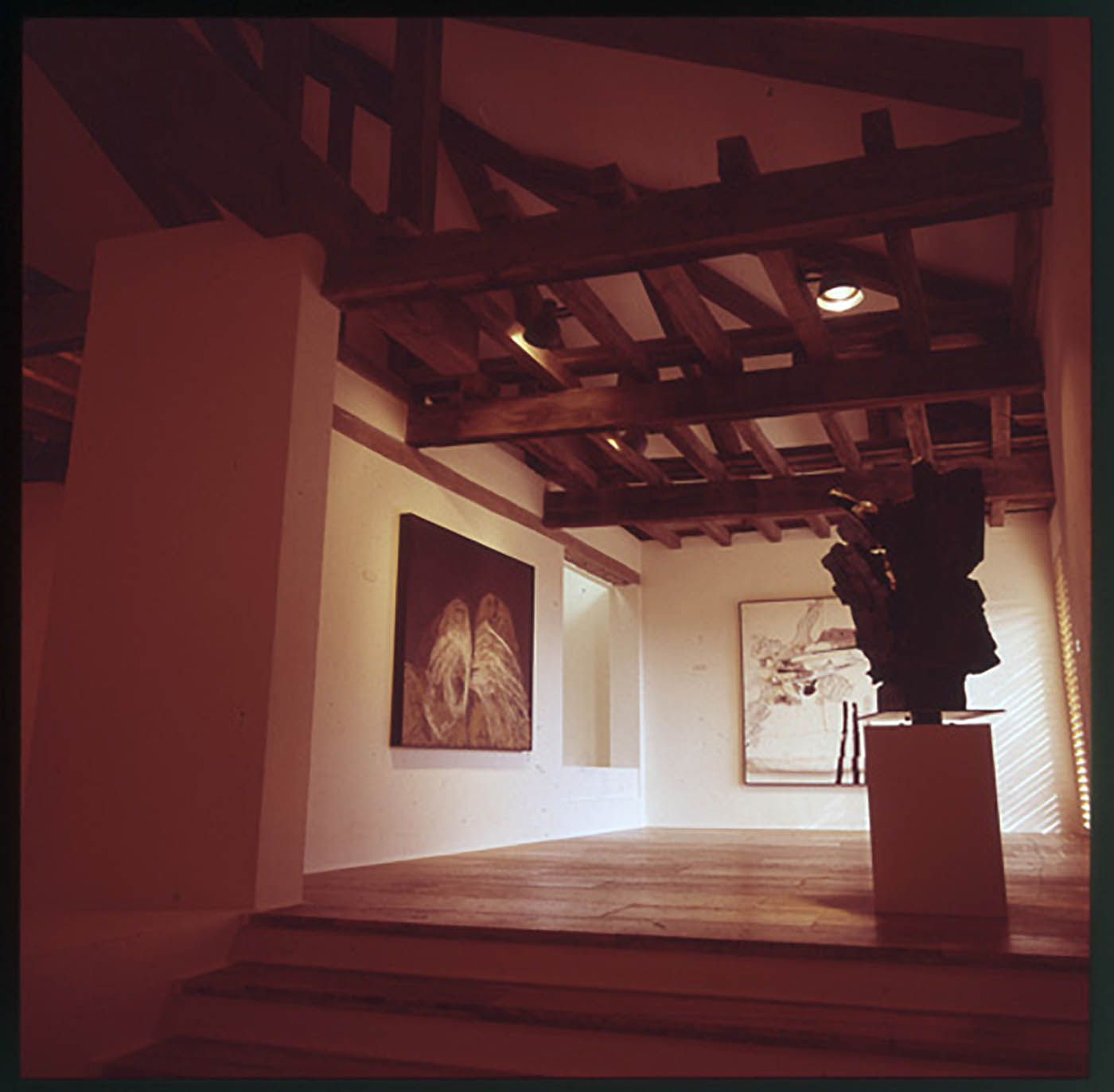THE CUENCA ABSTRACT ART MUSEUM
The Museo de Arte Arte Abstracto Español de Cuenca was inaugurated in July 1966. The construction began in 1963, although the idea was forged at the end of the fifties and the beginning of the sixties. With now more than fifty years of a totally fortunate trajectory, with the time the museum has become one of the most coherent Spanish museums in its approaches, where we can appreciate a homogeneous collection of paintings that represents all the aspects of Spanish abstract painting of the fifties.
If we make use of our memory and above all of our imagination, and we try to recreate the Cuenca of the late fifties and early sixties (and not only Cuenca but the Spain of those years), we can say that starting an adventure like the one that supposed the creation of a museum of abstract painting in that environment could be considered as a great daring. A daring, a madness or if the project came out well, as it was the case, a strange miracle.
However, we would think none of that if we knew in depth that the person who forged the idea, promoted the adventure and collected with true faith Spanish abstract art was Fernando Zóbel himself. As Juan Manuel Bonet defines very accurately in the catalog of the exhibition "El Grupo de Cuenca", we find in Zóbel the singularity of combining a very high intellectual, a great critical demand, and a generous willingness to transmit quite naturally, to those who approached him, a knowledge oriented, reasoned, and based on an innate ability to detect excellence; and not purely bookish, but of plural culture, elusive, and contradictory by nature. It is true that in order to successfully carry out a cultural initiative of these characteristics that transformed the socio/cultural life of a city and was an example of a museum at a national and international level, a series of circumstances had to concur.
On the one hand, there was Fernando Zóbel, a Spanish painter born in the Philippines, and with an education acquired between Spain, Switzerland and the Philippines, with a Harvard University Degree in Philosophy and Literature. Zóbel was frequently travelling to Spain, where he was always looking for an approach to his roots and his culture, in order to maintain a fluid contact with the artistic world that was developing in our country. In 1955, during one of his trips, Zóbel discovered in a small gallery (Fernando Fe Gallery) an exhibition of abstract painting with works by Luis Feito, Saura, Chillida, Tapies, etc. He immediately realized the vitality and quality of the work exhibited there. This discovery, apparently fortuitous, would mark his artistic, vital and human trajectory.
In those years, Fernando Zóbel was working in Manila in his family's business, while at the same time teaching oriental calligraphy at the University of Santo Tomás and getting up two hours earlier, trying to find time to paint before going to work. In the catalog of the Ayala Museum in Manila, Emmanuel Torres describes this period of Fernando’s life: “Those who attended his lectures marveled at the energy he had when he gave a lecture, after having spent hours in the office behind a desk as managing-director-partner of his family's prestigious business, Ayala y Cia.... He always answered with a smile and a rigorous response, I think he felt these classes as a great relief because they took him away from his purely commercial affairs. And the proof is that he never missed any of them. And although, with a lot of hard work he would paint and actively participate in the cultural life of the Philippines, this was not the most suitable place, at that time, to develop his career as a painter and all the creative drive he had inside him.”
Because of this, and after this discovery of Spanish abstract art, he began a series of friendships with Luis Feito (from whom he bought a painting at that exhibition in 1955), Rafael Canogar and Antonio Lorenzo. These friendships were nourished in the following years with a profuse correspondence and his already continuous trips to Spain, where he would also meet Gerardo Rueda, Sempere, Abel Martin, Manolo Millares, Saura etc., among others. He established a great friendship, above all, with Gerardo Rueda and Antonio Lorenzo, and identified himself completely with this generation of painters, to the point that in 1958 he moved temporarily to Madrid (Calle Velázquez, 98) and shared his studio with Gerardo Rueda. In 1959, he had a solo exhibition at the Biosca Gallery in Madrid, with the support of his fellow generation. During these years, Zóbel in turn was buying works by all of those artists. In 1962, he already had a still small collection with names like Saura, Rueda, Feito, Canogar, Antonio Lorenzo. At the end of that year, Gustavo Torner would also appear, who would later play a decisive role in the installation of the Museum.
"Enthused by the category of the abstract works of my colleagues and seeing with regret that the best examples of this type of artistic manifestation were going abroad, I began to collect paintings, sculptures, drawings and engravings, until I felt the moral duty to show them to the public". In those years, it is true that Spanish abstract painters attracted the attention of the international art world and obtained recognition in biennials outside our borders, while in Spain they were hardly recognized, with rare exceptions. Thus, it was not too far-fetched for Zóbel (who had the ability , critical demand, an innate generosity, the drive and the intellectual and cultural capacity, as well as that small dose of pragmatism that must exist behind great ideas) to feel in the early sixties the moral duty to show those paintings that he had collected with so much faith and passion.
In many long conversations with Gerardo Rueda and Antonio Lorenzo, Zóbel forged the idea of a museum and its possible location. Madrid could be one of the sites but it was soon discarded, since finding a large house in Madrid that met certain characteristics was a difficult and above all very expensive task that could be detrimental to the collection or to new acquisitions (Zóbel was always very clear that the important thing was the paintings and that a museum was created with a good collection). The building or the house that would house it would come later. So, it was thought, at that time, that perhaps the ideal site could be Toledo, considering the proximity of Madrid and the number of tourists who visited that city. Fernando Zóbel, Gerardo Rueda and Antonio Lorenzo visited the city on several occasions, looking for the right place to hang the collection, but without satisfactory results. Despite this, Fernando Zóbel was never discouraged and very tenacious when he firmly believed in his projects. He wrote in one of his diaries, intuitively perhaps, but knowing very well what he wanted: It is taking us a lot of work to find the house, but I am sure that when I see it, I will recognize it.
From that moment on, the series of circumstances to which I referred at the beginning, started to emerge and to converge in time.
For instance, there was a dinner attended by Fernando Zóbel, Antonio Lorenzo, Eusebio Sempere, Abel Martín and Gustavo Torner, among others. Sempere asked Zóbel how the Museum project was going, and he replied that he still could not find the right house. Gustavo Torner, unaware of the project until then, was interested in it and quickly thought of Cuenca, his city, as a place to carry it out, inviting Zóbel and this group of painters to visit it. Following this, a series of coincidences began to come together, which in some way facilitated the realization of such an unusual undertaking at that time. The Mayor of Cuenca at that time was Mr. Rodrigo Lozano de la Fuente, a close relative of Gustavo Torner, and as Deputy Mayor was Mr. Fernando Nicolás Isasa, a forestry engineer, a professional colleague of Torner. And it was precisely the latter, Nicolás Isasa, who came up with the site of the “Hanging Houses”, which at that precise moment were being restored, but without a clear definitive destination. When Zóbel saw the building he immediately "recognized" it, so there was no need to convince or encourage him, he immediately realized the magnificent possibilities that the Hanging Houses of Cuenca could have for his project, little is known about the building, which dates from the 15th century, and which at one time housed the Town Hall of the municipality. He also realized, immediately, that with these houses, his project had just climbed a step, because it was an emblematic building that represented an entire city, a building that constituted one of the most beautiful and widespread images of the Spanish geography.
And if all these series of fortunate vicissitudes took place, it was not without luck that the mayor of the city had the courage to allow such a task to be undertaken. He not only didn´t raise any objections or distrust, but quite the contrary. As Zóbel himself always said, "he gave us all kinds of facilities, an umbrella to protect us from all the bureaucratic issues that could arise and that in fact did arise, and he let us work freely on the project". This was a project that in that gray Spain, at the beginning of the sixties and even more, in a city in the center of Castile, could have been labeled as transgressive and that represented a painting that broke with all existing rules, anti-academic and totally outside the established cultural orbit, all this taken to the field of thought could be a total challenge to the established rules and regimes. Therefore, this task, which also had to involve the representatives and authorities of the city, passed with a calm and a naturalness, very much out of the ordinary for that time.
With the loan of this incomparable site to house the collection, Zóbel's project became, to a certain extent, a collective task; always organized and supervised by him. The architectural and spatial concept of the museum was entrusted to Gustavo Torner, who did a great job with total respect for the building itself, recovering the primitive spaces and preserving authentic remains of the original Casas Colgadas, assisted by the municipal architects Francisco León Meler and Fernando Barja. Gerardo Rueda oversaw the lighting and framing, while Fernando Zóbel was in charge of the collection, criteria and organization, always with his unifying character, although everyone helped in everything, and sometimes these functions were shared, as well as the continuous dialogues and conversations on the subject, which also extended to Antonio Lorenzo and Eusebio Sempere. All the paintings were bought and chosen directly by Zóbel, without ever admitting any donation that could reduce his freedom and criteria. The adaptation work lasted three years, and it took almost a year to hang the collection, seeking at all times for each painting to have its own and the most appropriate space for contemplation and with individualized lighting.
If the restoration and adaptation works were carried out naturally, the paintings were housed in the museum and in the environment of Cuenca with the same naturalness. From the beginning, there was a total integration between the interior and exterior space; between the paintings, the sculptures, the building, and the rocky geography that can be contemplated. Perhaps it has no other secret than the beauty and magic of the Cuenca landscape, as well as the quality of the work on display.
Back then, the Museum had a hundred paintings, 14 sculptures, and about two hundred drawings and engravings. But for space restrictions, in those early years one could only contemplate about forty works on display. Thus, the exhibition had a rotating character. The collection presented in a homogeneous way all the tendencies of abstract art of the 50's, as well as all the components of the two most significant and radical movements of the time, such as "El Paso" and "Dau al Set". It was very rare for Spain not to show individual shows but a whole generation of painters of such high quality, who had a weight and such a direct influence on the course of our artistic panorama. Since then and until the creation of the Centro de Arte Reina Sofía, the Museum became the only place where a part of our most recent art could be contemplated in a coherent way in a dreamed space. And all this by an intelligent and generous private initiative.
In 1977, when Pablo López de Osaba was the director, the Museum's successful expansion began with an annex building, which tripled the Museum's capacity. It was designed by Gustavo Torner, with the help of the municipal architect Fernando Barja, and conceived entirely as a museum space, with fewer windows to the outside but perfectly integrated with the original building. It had, in addition, the virtue of occupying a bleak space of difficult urban planning solution. It closed the square that gave access to the Museum in an elegant and noble way, recovering a Renaissance facade from a palace in ruins from a small town near Cuenca.
When talking about the Museum of Cuenca, we cannot forget the prolific work carried out in the field of graphic art and its diffusion. Fernando Zóbel, a great enthusiast of the universe of books and engraving (Harvard University named him Honorary Curator of Rare Books and Manuscripts), created a department of graphic arts. Engravers like Antonio Lorenzo gave engraving lessons for two or three summers, as well as artisan serigraphers like Abel Martín, designers and typographers of the category of Ricard Giralt Miracle and his disciples Jaime and Jorge Blassi, and many others. Together they designed and produced museum tickets, postcards, reproductions, and posters, as well as continuous and careful editions of engravings, serigraphs and lithographs of the painters represented in the collection. It must be taken into account that in the sixties there was hardly any diffusion of graphic works; specialists were scarce and there was no gallery qualified in the field, as there are now. Thus, it was almost a real novelty for that time to have direct access to the original graphic works of abstract painters. The Museum of Cuenca hence became a pioneer in the diffusion of this kind of work in the sixties.
If Fernando Zóbel's adventure had and has its true value, both intellectually and artistically, it was to bet on a generation of emerging painters, with their incipient careers at that time, and realizing that all of them already had a work of sufficient quality to be able to exhibit it worthily and house it in a museum, fortunately filling from the beginning the void and the shortcomings of the official culture. Thus, it is not surprising that, just as he was able to see the quality of the work of his fellow generation members, in the mid and late seventies he began to worry and think very seriously about its future, about the way and manner of achieving not only the permanence but also the continuity of this project, preserving its living and experimental character. Many were the solutions that were thought of, and although Fernando Zóbel never put any kind of conditions on the donation of his collection, he wished, deep down, that it should not disintegrate and, if possible, that it should remain in Cuenca; and above all that it should not pass to people or entities for whom it could be a burden, or whose activities might not be in line with the development of the Museum. And once again, he was right in his approach by donating his collection to another private entity, the Juan March Foundation. According to Zóbel: (...) it coincided quite clearly with our intentions and had the freedom of criteria, the organization, and the economic strength to expand, enrich, and project the vital development of the Museum into the future. This was the first time in Spain that a private, famous, and prestigious collection was donated to another private institution. Since its creation, the Juan March Foundation had already achieved a brilliant trajectory in the development and diffusion of contemporary plastic arts in Spain through its magnificent exhibitions, filling another official gap, its collection, similar to that of the museum, and its aid and scholarship programs for artistic creation. Fernando Zóbel traspaso el testigo de su Museo y de su colección a la Fundación Juan March, pero no sin antes haber dejado una profunda huella en él, su propia impronta, que era siempre esa continua búsqueda del orden, la armonía y el equilibrio en todos sus proyectos y que también se ve reflejada en su pintura.
Rafael Pérez-Madero
September 2006

